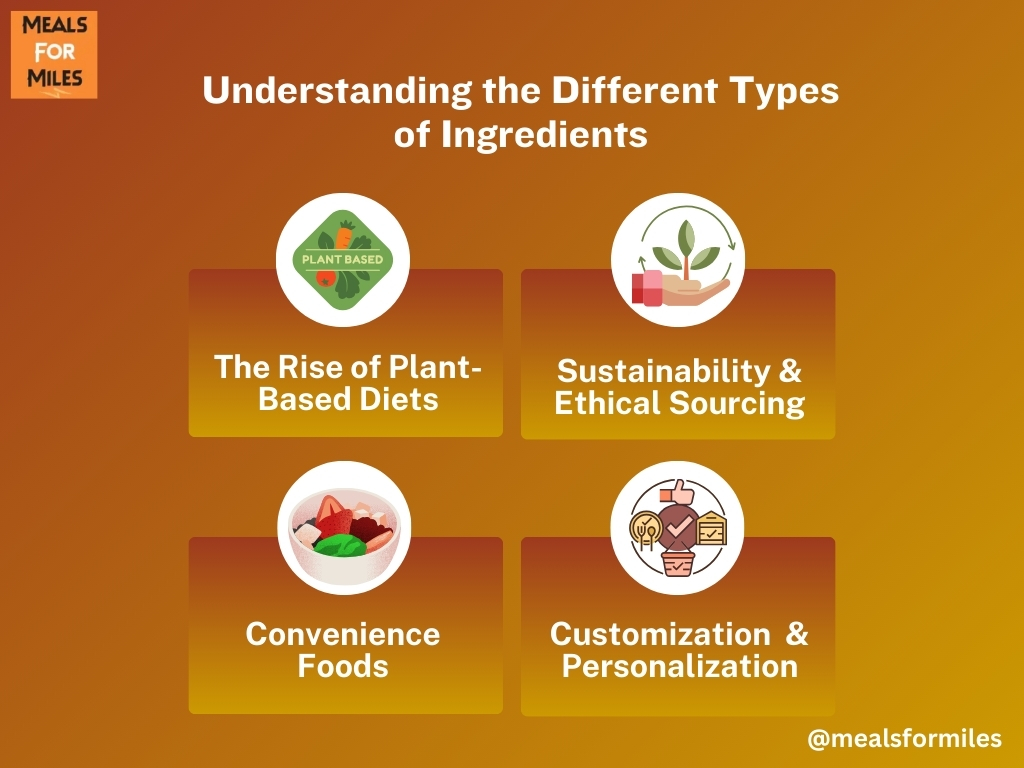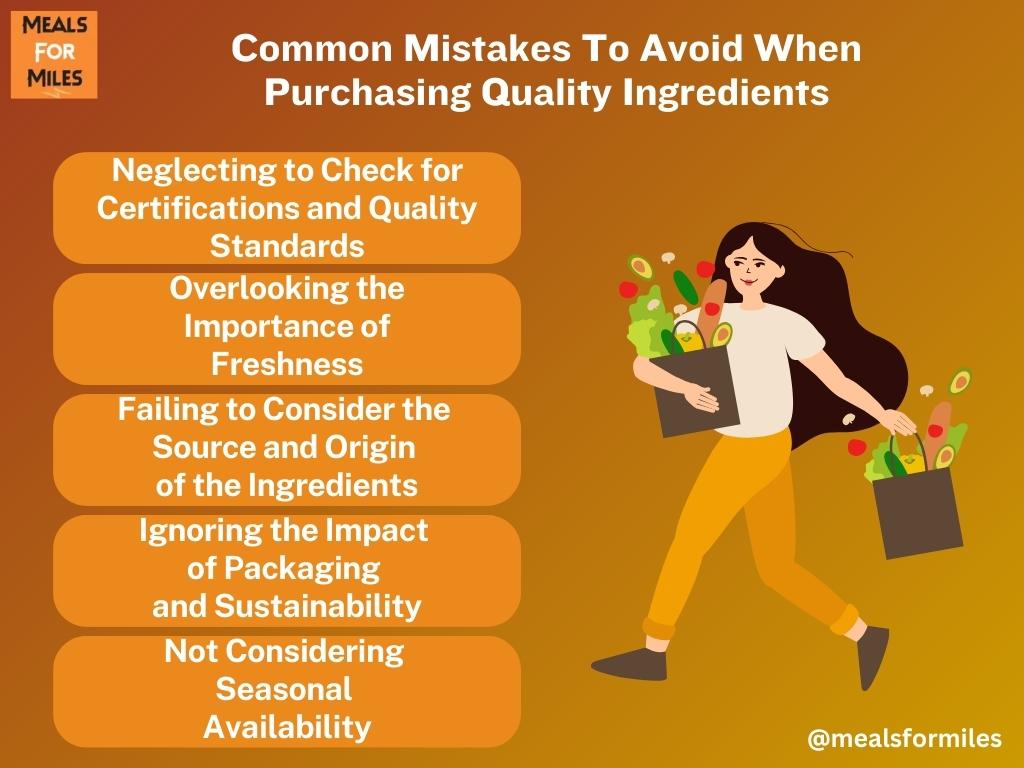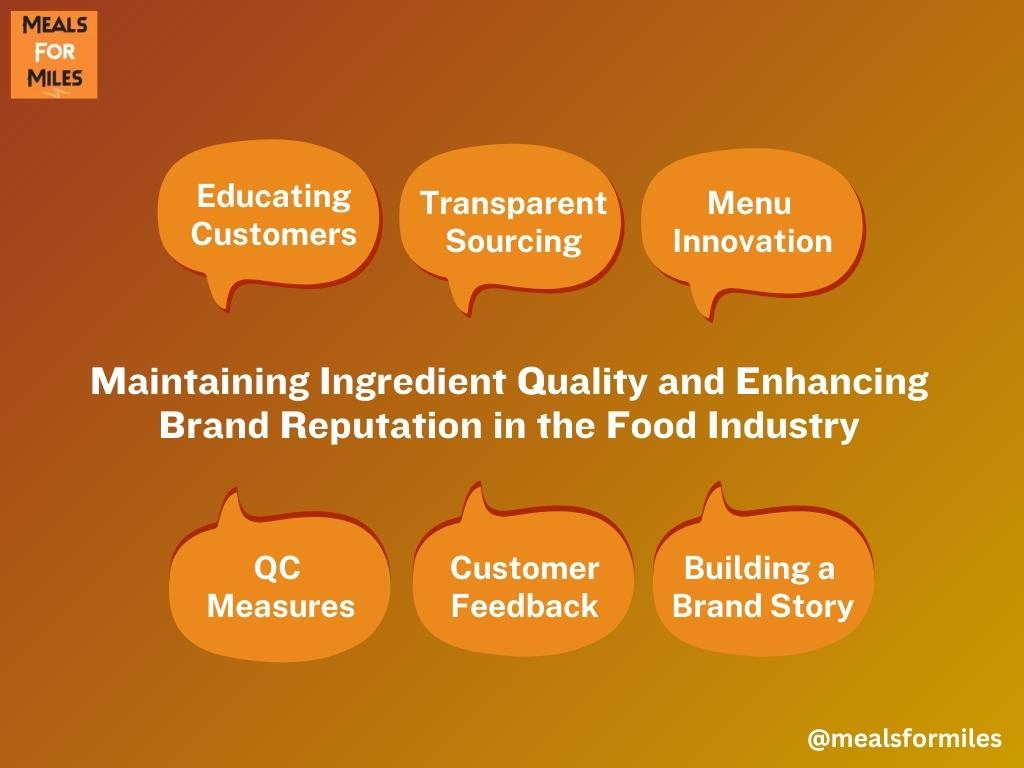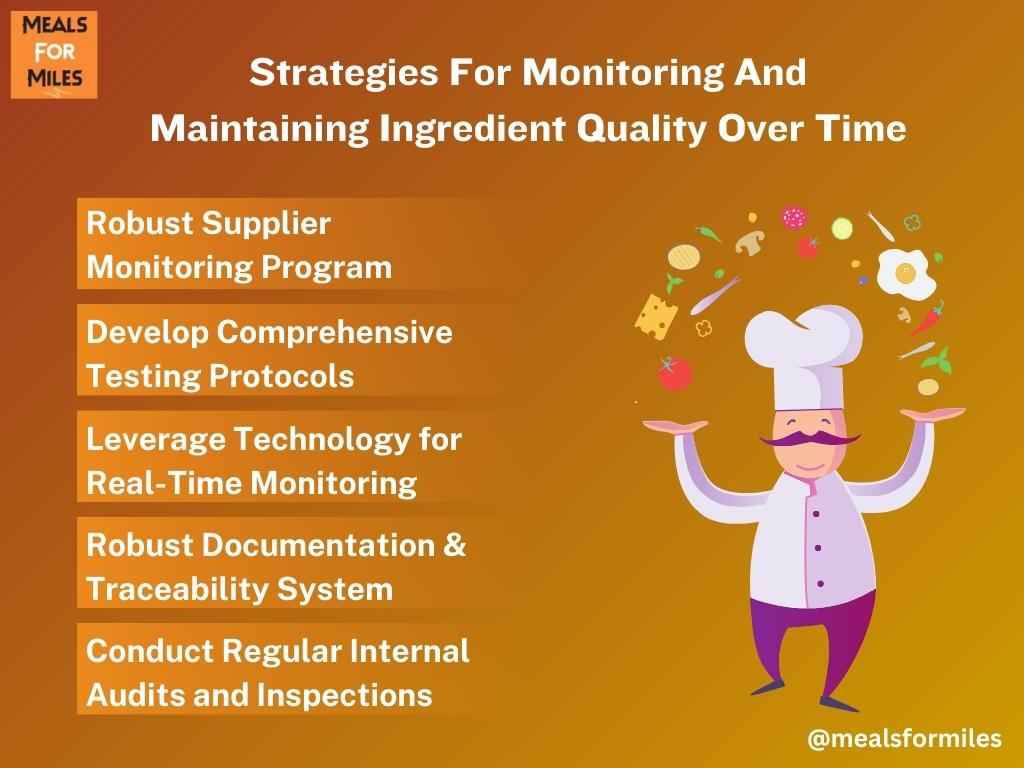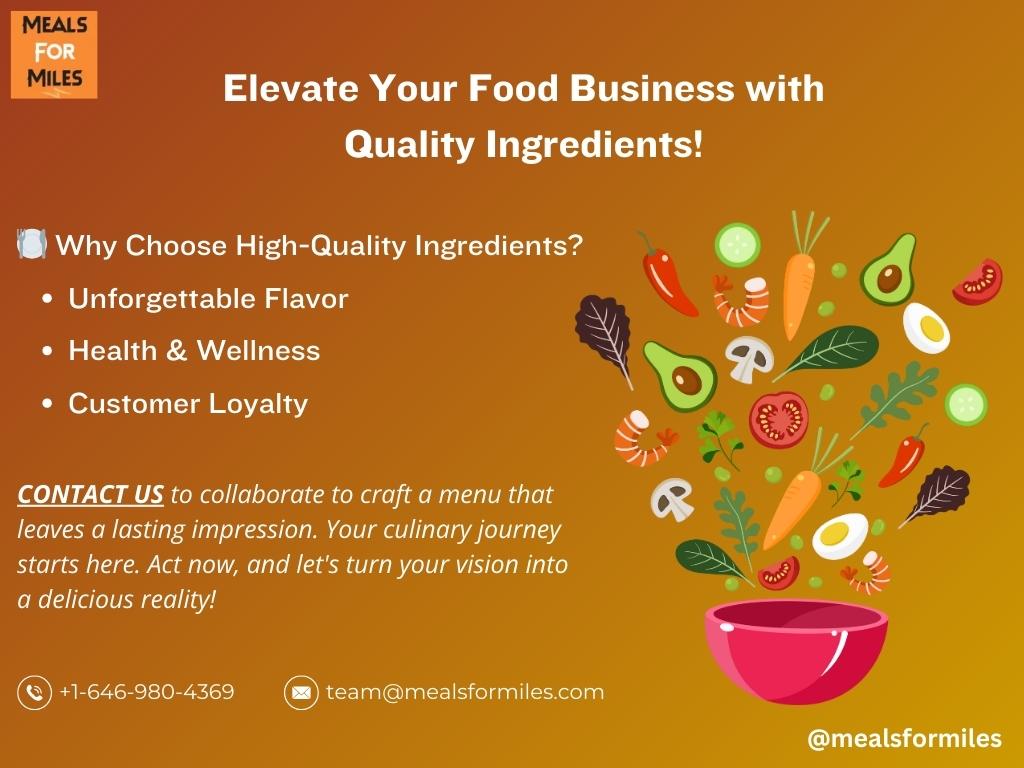Ready to take your food business to the next level?
Don’t underestimate the power of high-quality ingredients! Our team is dedicated to providing you with top-notch ingredients that will elevate the flavors, textures, and presentations of your creations.
The quality of ingredients in a food business is crucial for its success, impacting taste, safety, and profitability. Fresh and processed ingredients play distinct roles, with fresh ones often yielding superior results. Common mistakes to avoid include skimping on quality and buying excess stock. To source quality ingredients affordably, consider bulk buying and comparing prices.
Poor-quality ingredients can harm customer experience and brand reputation. Strategies for ensuring ingredient quality involve regular checks and staff training. Monitoring ingredient quality over time requires efficient systems and technology, like RFID tags and software applications. In conclusion, using high-quality ingredients is essential for achieving long-term success in the food industry.
Table of Contents
- Introduction
- Understanding the Different Types of Ingredients
- Benefits of Using High-Quality Ingredients for Your Food Business
- Common Mistakes To Avoid When Purchasing Quality Ingredients
- Tips on How To Source Quality Ingredients At An Affordable Cost
- The Impact Poor Quality Ingredients Can Have On Your Customers And Brand Reputation
- Implementing Strategies For Ensuring High Quality In Your Food Production Processes
- Strategies For Monitoring And Maintaining Ingredient Quality Over Time
- The Role Of Technology In Enhancing Ingredient Quality Management
- Final Thoughts: The Critical Role Of High-Quality Ingredients In A Successful Food Business
Introduction
The quality of ingredients used in a food business is paramount to its success. High-quality ingredients are key to creating delicious flavors, pleasing textures, and attractive presentations. Quality ingredients also have an impact on the nutritional value of the finished product, as well as its shelf life and safety. In today’s competitive food industry, it is essential that businesses understand the importance of sourcing quality ingredients in order to remain successful and profitable.
Understanding the Different Types of Ingredients
There are two main categories of ingredients used in food production: fresh and processed. Fresh ingredients include fruits, vegetables, dairy products, meats, fish, grains, legumes, nuts, herbs, spices, oils, sugars, vinegars, condiments, salts, and other seasonings. Processed ingredients include canned goods, jams and jellies, dried fruits and vegetables, baking mixes, canned soups, frozen foods, and convenience foods.
Here are the 10 List of Key Trends and Considerations in the Food Industry:
- The Rise of Plant-Based Diets: With the increasing popularity of plant-based diets, there is a growing demand for fresh ingredients such as fruits, vegetables, legumes, and nuts. This has led to innovative products like meat alternatives made from plant proteins or dairy alternatives made from nuts or soy.
- Organic and Natural Ingredients: Consumers are becoming more conscious about their food choices and are seeking out organic and natural ingredients. This has led to a surge in organic farming practices and a greater emphasis on sourcing fresh ingredients free from pesticides, hormones, and artificial additives.
- Functional Foods: The demand for foods that offer health benefits beyond basic nutrition is on the rise. This has created a market for processed ingredients such as fortified cereals, protein bars, and drinks that contain added vitamins, minerals, antioxidants, or probiotics.
- Convenience Foods: With busy lifestyles, convenience foods have become increasingly popular. Processed ingredients like frozen meals, pre-packaged snacks, and ready-to-eat meals cater to the need for quick and easy meal options. This trend has also led to the development of healthier convenience options, such as pre-cut fruits and vegetables or portion-controlled snack packs.
- Clean Label Movement: Consumers are becoming more wary of artificial additives and preservatives in their food. As a result, there is a growing demand for processed ingredients that have a clean label – meaning they contain recognizable, natural ingredients without any artificial additives or excessive processing.
- Sustainability and Ethical Sourcing: There is a rising concern about the environmental impact of food production and the welfare of animals. Consumers are increasingly looking for fresh ingredients that are sustainably sourced and produced in an environmentally friendly manner. This has led to certifications like Fair Trade or Rainforest Alliance, which ensure ethical sourcing practices.
- International Flavors and Cuisines: With globalization, people are becoming more adventurous in their food choices. This has created a demand for a wide range of fresh and processed ingredients that are used in different international cuisines. It has also led to the popularity of fusion foods that combine elements from various culinary traditions.
- Food Safety and Traceability: In recent years, there have been several high-profile food safety incidents that have raised concerns among consumers. As a result, there is a growing emphasis on ensuring the safety and traceability of both fresh and processed ingredients. This includes initiatives like DNA testing, blockchain technology, and strict quality control measures throughout the supply chain.
- Innovative Packaging Solutions: With the increasing focus on reducing food waste and improving shelf life, there is a need for innovative packaging solutions for both fresh and processed ingredients. This includes technologies like modified atmosphere packaging, vacuum sealing, or compostable packaging materials.
- Customization and Personalization: Consumers are seeking personalized food experiences tailored to their dietary preferences and health goals. This has led to the development of products and services that allow individuals to customize their meals, such as meal kits or personalized nutrition plans. Both fresh and processed ingredients play a role in providing these tailored options.
Benefits of Using High-Quality Ingredients for Your Food Business
Investing in high-quality fresh ingredients for a food business has several benefits. Firstly, using high-quality ingredients improves the taste and texture of dishes, leading to increased customer satisfaction and repeat visits, ultimately boosting sales. Secondly, high-quality produce requires less preparation time, resulting in labor cost savings. Lastly, businesses can charge higher prices for dishes made with high-quality ingredients, resulting in higher profit margins.
Here are the Top 10 Benefits of Using High-Quality Ingredients for Your Food Business:
- Health and Safety: Using high-quality ingredients ensures that your food business is providing safe and healthy options to customers. Fresh and premium ingredients are less likely to be contaminated or spoiled, reducing the risk of foodborne illnesses and customer complaints.
- Reputation and Branding: Incorporating high-quality ingredients in your dishes helps build a positive reputation for your food business. Customers appreciate businesses that prioritize quality and are willing to pay more for it. This can help establish your brand as one that values excellence, leading to customer loyalty and positive word-of-mouth marketing.
- Differentiation: In a competitive food industry, using high-quality ingredients sets your business apart from others. It allows you to offer unique and superior food options that customers cannot easily find elsewhere. This differentiation can attract new customers and create a niche market for your business.
- Enhanced Culinary Creativity: High-quality ingredients inspire chefs and cooks to experiment with new flavors and techniques, resulting in more innovative and exciting dishes. This creativity can help your food business stand out and generate buzz, attracting customers who are looking for a memorable dining experience.
- Health-Conscious Customers: With the growing trend of health-conscious eating, using high-quality ingredients can cater to this demand. Fresh produce and organic ingredients are often associated with healthier food choices, appealing to customers who prioritize nutrition and well-being. This can expand your customer base and attract a loyal following of health-conscious individuals.
- Ethical and Sustainable Practices: Investing in high-quality ingredients often means supporting ethical and sustainable farming practices. Customers are increasingly concerned about where their food comes from and how it is produced. By sourcing ingredients from reputable suppliers who prioritize fair trade, organic farming, or local sourcing, your food business can align with these values, attracting socially conscious consumers.
- Better Presentation and Instagrammability: High-quality ingredients tend to have vibrant colors, textures, and flavors that make dishes visually appealing. This can lead to customers sharing photos of your dishes on social media platforms, increasing brand exposure and attracting new customers who are enticed by the aesthetic appeal.
- Consistency and Reliability: High-quality ingredients typically offer better consistency in taste and quality, allowing your food business to deliver a consistently excellent dining experience. This reliability can foster customer trust and loyalty, as they know they can expect the same high standards every time they visit.
- Improved Supplier Relationships: Investing in high-quality ingredients can lead to stronger relationships with suppliers. By consistently purchasing premium products, you can negotiate better deals, secure priority access to limited supplies, and gain access to exclusive ingredients. These advantages can give your food business a competitive edge and ensure a steady supply of top-notch ingredients.
- Employee Morale and Satisfaction: Working with high-quality ingredients can boost employee morale and job satisfaction. Chefs and kitchen staff take pride in working with superior ingredients, as it allows them to showcase their culinary skills and create exceptional dishes. This positive work environment can result in higher employee retention rates and a motivated team that consistently delivers outstanding food.
Common Mistakes To Avoid When Purchasing Quality Ingredients
When purchasing quality ingredients, it is important to avoid some common mistakes. Firstly, do not compromise on price as cheap does not always mean good quality. Take time to research suppliers who offer premium products within your budget. Secondly, avoid buying more than you need as excess stock can go bad and become obsolete. Thirdly, be cautious of buying from questionable suppliers without proper safety controls. Lastly, be aware that frozen items may contain additives and preservatives that can affect flavor and color.
- Neglecting to Check for Certifications and Quality Standards: Ensure that the suppliers you are considering have the necessary certifications and adhere to strict quality control measures. Look for certifications such as ISO, HACCP, or organic certifications, depending on your specific requirements.
- Overlooking the Importance of Freshness: Freshness is crucial when it comes to certain ingredients such as seafood, fruits, and vegetables. Make sure to assess the supplier’s delivery and storage practices to ensure that the ingredients you receive are as fresh as possible.
- Failing to Consider the Source and Origin of the Ingredients: Understanding where your ingredients are sourced from can provide valuable insight into their quality. Opt for suppliers who have transparent supply chains and prioritize locally sourced or ethically produced ingredients, if applicable to your industry.
- Ignoring the Impact of Packaging and Sustainability: Packaging plays a significant role in maintaining the quality of ingredients. Choose suppliers who prioritize sustainable packaging options that minimize waste and reduce environmental impact.
- Not Considering Seasonal Availability: Depending on the ingredient, its availability may vary throughout the year due to seasonal factors. Taking seasonality into account can help you plan your purchasing strategy more efficiently and ensure the freshest ingredients are used in your products.
- Overlooking Potential Allergens or Dietary Restrictions: It is essential to be aware of any potential allergens or dietary restrictions associated with the ingredients you are purchasing. Ensure that your suppliers provide accurate and clear labeling information to avoid any issues related to allergies or specific dietary needs.
- Neglecting to Establish a Strong Relationship with Suppliers: Building a strong relationship with your suppliers can lead to better communication, timely deliveries, and potential cost savings. Regularly review and evaluate your suppliers’ performance to ensure they consistently meet your quality requirements.
By avoiding these common mistakes, you can enhance the overall quality of the ingredients used in your products, ensuring customer satisfaction and helping your business thrive in the industry.
Tips on How To Source Quality Ingredients At An Affordable Cost
To source quality ingredients at an affordable cost, businesses can consider bulk buying directly from farmers markets, wholesalers, importers, etc. This allows them to access products straight from the source, ensuring the best quality at the best price. Farmers markets often offer special discounts throughout the year. Another tip is to shop around and compare prices between different vendors before making a purchase. Online research can help find deals, and it is also worth looking for promotions offered by manufacturers, distributors, and retailers.
In addition to bulk buying and shopping around, businesses can also consider the following strategies to source quality ingredients at an affordable cost:
- Build Direct Relationships with Local Farmers: By directly partnering with local farmers, businesses can ensure the freshness and quality of ingredients while potentially negotiating better prices. This also supports the local community and promotes sustainable agriculture.
- Utilize Co-ops and Group Purchasing: Joining or forming a cooperative purchasing group with other businesses in the same industry can enable collective bargaining power and access to bulk discounts. This can be particularly beneficial for small businesses or startups.
- Consider Seasonal and Regional Ingredients: Opting for seasonal and locally sourced ingredients can often be more cost-effective as they require less transportation and are abundant during specific times of the year. This approach also supports sustainability and can provide unique flavors and variety to a menu or product line.
- Explore Alternative Suppliers: Apart from traditional wholesalers and importers, businesses can explore alternative suppliers such as food hubs, community-supported agriculture (CSA) programs, or food cooperatives. These alternative sources may offer competitive pricing and a wider range of unique ingredients.
- Focus on Ingredient Optimization: Analyze recipes and products to identify opportunities for ingredient optimization. This involves finding alternative, more cost-effective ingredients that still maintain the desired quality and taste. Collaboration with chefs, nutritionists, and food scientists can help in this process.
- Invest in Long-Term Contracts: Establishing long-term contracts with suppliers can provide stability and potentially lead to better pricing agreements. This allows businesses to secure reliable sources of quality ingredients at a more affordable cost.
- Consider Private Labeling or Direct Sourcing: Instead of relying solely on third-party suppliers, businesses can explore opportunities for private labeling or direct sourcing. This involves working directly with farmers or producers to create custom products or ingredients, cutting out intermediaries and potentially reducing costs.
- Embrace Technology and Automation: Adopting technology-driven solutions such as inventory management systems, supply chain optimization tools, and automated purchasing processes can help streamline operations, reduce costs, and ensure optimal ingredient sourcing.
- Collaborate with Industry Peers: Networking and collaborating with other businesses in the industry can uncover valuable insights and strategies for finding affordable, quality ingredients. Sharing knowledge, resources, and even bulk purchasing opportunities can be mutually beneficial.
- Stay Updated on Industry Trends and Innovations: Keeping an eye on emerging trends, new farming techniques, and ingredient innovations can help businesses identify cost-effective alternatives or more efficient sourcing methods. Attending industry events, conferences, and workshops can provide valuable insights and networking opportunities.
By implementing these tips and strategies, businesses can navigate the ingredient sourcing landscape more effectively, ensuring the best quality ingredients at an affordable cost, ultimately enhancing their products and profitability.
The Impact Poor Quality Ingredients Can Have On Your Customers And Brand Reputation
Using high-quality ingredients is crucial for the reputation of any restaurant, catering establishment, take away, or delivery service. Opting for poor quality, cheaper options can negatively impact the customers’ experience, resulting in poor flavors, unattractive presentation, unappealing texture, lack of nutrition, and even health risks.
These factors can lead to a decrease in customer numbers, reduced profits, customer dissatisfaction, and a damaged brand name. In some cases, the negative publicity caused by these issues can have long-term consequences for the success of the company. Therefore, it is essential to prioritize the use of the best possible ingredients, regardless of the operation’s size or budget.
Here are the 10 Strategies for Maintaining Ingredient Quality and Enhancing Brand Reputation in the Food Industry:
- Educating Customers: One idea is to educate customers about the importance of high-quality ingredients. This can be done through informative blog posts, social media content, or even hosting workshops or events to showcase the difference in taste and quality between dishes made with poor quality ingredients versus those made with high-quality ingredients.
- Partnering with Local Suppliers: Another idea is to establish strong relationships with local suppliers who provide high-quality ingredients. This can not only ensure a consistent supply of fresh and premium ingredients but also promote the use of local produce, which can be a selling point for customers who prioritize supporting local businesses and sustainable practices.
- Transparent Sourcing: Being transparent about the sourcing of ingredients can help build trust with customers. This can include displaying information about the origin of key ingredients, such as where the meat is sourced from or the farm where the vegetables are grown. Sharing this information can assure customers of the quality and freshness of the ingredients used.
- Menu Innovation: Creating a menu that highlights the use of high-quality ingredients can set a restaurant or catering establishment apart from competitors. By featuring dishes that showcase premium ingredients and their unique flavors, textures, and nutritional value, customers will be more likely to choose these options over lower quality alternatives.
- Staff Training: Investing in staff training can ensure that everyone involved in food preparation understands the importance of using high-quality ingredients. This can include training sessions on ingredient selection, proper storage and handling, and cooking techniques that maximize the flavors and textures of premium ingredients.
- Quality Control Measures: Implementing stringent quality control measures can help maintain consistency and ensure that only the best ingredients are used. This can involve regular inspections of ingredient suppliers, thorough checks of incoming ingredients, and ongoing monitoring of food preparation processes to identify any potential issues early on.
- Collaborating with Industry Experts: Partnering with renowned chefs or industry experts who are known for their emphasis on high-quality ingredients can help enhance a brand’s reputation and attract customers who value culinary excellence. This can involve hosting guest chef events, collaborating on menu creations, or even featuring endorsements from these experts on marketing materials.
- Engaging with Customer Feedback: Actively seeking and responding to customer feedback can help identify any issues related to ingredient quality and address them promptly. This can involve conducting surveys, monitoring online reviews, and implementing a system for customers to provide feedback directly. Responding to feedback and taking necessary actions to improve can demonstrate a commitment to quality and customer satisfaction.
- Promoting Health and Wellness: Emphasizing the use of high-quality ingredients as part of a healthy and balanced diet can appeal to customers who prioritize their well-being. This can involve highlighting nutritional information, offering healthier menu options, and providing educational resources on the benefits of high-quality ingredients.
- Building a Brand Story: Creating a brand story that emphasizes the commitment to using only the best ingredients can help differentiate a business from competitors. By sharing the journey of sourcing, selecting, and preparing high-quality ingredients, customers can feel a deeper connection to the brand and its values, ultimately leading to increased loyalty and positive word-of-mouth.
Implementing Strategies For Ensuring High Quality In Your Food Production Processes
In order to guarantee consistent levels of the highest standard in every dish served, businesses must implement strategies to ensure that all stages of the production process involve the use of only the best available materials. Regular checking of incoming stock, checking cooking temperatures, storage times, expiry dates, among other things, form part of good practice in ensuring that every dish served meets set criteria. Additionally, staff training on proper handling, storage, and usage of recipes is crucial in ensuring consistently tasty dishes are presented time after time.
- Implement a Rigorous Supplier Selection Process: Thoroughly evaluate suppliers and establish strict criteria for quality standards, including food safety practices, certifications, and track record. Partner with reliable suppliers who prioritize quality to ensure that only the best materials are used in production processes.
- Utilize Advanced Technology for Quality Control: Leverage technology advancements in the food industry for quality control. Implement automated systems for temperature checks, real-time monitoring of storage conditions, and software solutions for tracking expiry dates and managing inventory effectively.
- Conduct Regular Inspections and Audits: Establish a system for regular inspections and audits to identify potential quality issues. Hire internal quality control teams or work with external auditors to perform thorough checks of the production process, storage facilities, and staff adherence to food safety protocols.
- Continuous Staff Training and Education: Invest in comprehensive training programs for all staff involved in food production. This includes training on proper handling, storage, and usage of recipes, as well as educating employees about the importance of quality control measures. Regular refresher courses and workshops are essential to reinforce these practices.
- Implement a Robust Traceability System: Maintain a traceability system that tracks ingredient journeys from supplier to plate. This system should quickly identify the source of quality issues and allow for immediate corrective actions. Utilize technology like barcodes or RFID tags to enhance traceability capabilities.
- Foster a Culture of Quality: Instill a culture of quality throughout the organization by setting clear quality objectives, recognizing and rewarding employees who prioritize quality, and establishing regular communication channels for addressing concerns or suggestions related to maintaining high standards.
- Collaborate with Industry Associations and Regulatory Bodies: Actively engage with industry associations and regulatory bodies to stay informed about trends, regulations, and best practices in food production. Seek guidance and participate in industry events to continuously improve quality processes.
- Seek Feedback from Customers: Regularly solicit feedback from customers to gain insights into the quality of dishes served. Implement customer satisfaction surveys and open communication channels to identify areas for improvement and address quality concerns promptly. Take customer feedback seriously to enhance quality processes and ensure customer satisfaction.
By implementing these strategies, businesses can establish a robust framework for ensuring high quality in their food production processes. This not only guarantees the consistent delivery of delicious dishes but also enhances customer trust and loyalty, ultimately driving business success.
Strategies For Monitoring And Maintaining Ingredient Quality Over Time
Maintaining excellent standards over an extended period requires the implementation of effective monitoring systems to keep track of the changing nature of the environment. This involves regular testing of samples from existing inventory and paying attention to changes in the supplier’s crop conditions, climate weather fluctuations, seasonal changes, among others.
Similarly, recording details of each batch of new inventory received and labeling plates are useful for tracking where a batch came from, the date produced, shelf life, etc. All information should be logged properly to allow for easy recall whenever needed. Furthermore, implementing strict internal control measures helps detect problems quickly and act accordingly before any serious issues arise.
- Implement a Robust Supplier Monitoring Program: Regularly assess the quality and reliability of suppliers through on-site visits, quality control process reviews, and track record analysis. This ensures ingredients are sourced from reputable and reliable suppliers.
- Develop Comprehensive Testing Protocols: Establish a testing program to analyze samples from existing inventory regularly. Test for nutrient content, purity, freshness, and potential contaminants. Utilize in-house testing capabilities and collaborate with external laboratories for accurate results.
- Leverage Technology for Real-Time Monitoring: Implement automated monitoring systems that track environmental factors like temperature, humidity, and light exposure in real-time. This helps identify deviations from desired storage conditions for timely corrective actions.
- Stay Updated on Crop Conditions and Climate Fluctuations: Maintain strong communication with suppliers and stay informed about changes in crop conditions, climate patterns, and external factors affecting ingredient quality. Stay updated through supplier updates, industry publications, and relevant conferences.
- Implement a Robust Documentation and Traceability System: Create a comprehensive system to document essential information about each batch of inventory received. This includes origin, production date, shelf life, and quality control parameters. Ensure easy access and efficient recall when necessary.
- Conduct Regular Internal Audits and Inspections: Review internal control measures regularly to ensure their effectiveness in maintaining ingredient quality. Conduct internal audits, inspect storage facilities, and assess staff training programs. Address issues or deviations promptly with corrective actions.
- Foster a Culture of Quality and Continuous Improvement: Instill a sense of accountability and responsibility for ingredient quality across the organization. Encourage employees to actively identify and address quality issues, provide training and resources for support, and continuously evaluate and improve processes.
- Collaborate with Industry Experts and Organizations: Stay connected with industry experts, trade associations, and regulatory bodies to remain updated on trends, best practices, and regulatory requirements. Collaboration and knowledge sharing can help identify emerging risks and implement effective strategies for maintaining ingredient quality over time.
Overall, monitoring and maintaining ingredient quality over time requires a proactive approach that involves regular testing, effective communication with suppliers, robust internal control measures, and a commitment to continuous improvement. By implementing these strategies, industry experts can ensure that their ingredients meet the highest standards of quality and safety throughout their shelf life.
The Role Of Technology In Enhancing Ingredient Quality Management
Technology plays a critical role in improving ingredient quality management across various industries such as food and beverage, pharmaceuticals, and cosmetics. Software systems enable companies to track and monitor the entire supply chain process, from sourcing ingredients to distribution. Real-time data collection and analysis ensure that ingredients meet quality standards and regulatory requirements.
Automation reduces the risk of human error and increases efficiency, with sensors detecting any deviations in ingredient quality and triggering immediate alerts and corrective actions. Ultimately, technology helps businesses streamline ingredient quality management, improve product safety, and maintain customer trust.
Here are the 8 List of Technological Advancements and Strategies for Enhancing Ingredient Quality Management:
- Implementing Blockchain Technology: Blockchain provides a secure and transparent system for tracking ingredient quality throughout the supply chain. It verifies the origin and quality of ingredients, reducing the risk of fraud and contamination, and enhancing ingredient quality management.
- Utilizing Artificial Intelligence (AI) for Ingredient Analysis: AI-powered systems analyze data to identify trends and patterns in ingredient quality. They detect issues and deviations, offering recommendations for corrective actions. AI helps proactively address quality concerns and prevent product recalls.
- Implementing IoT (Internet of Things) Devices: IoT devices like sensors and RFID tags monitor ingredient quality in real-time. They track parameters like temperature and humidity and trigger alerts for deviations, enabling prompt corrective actions and preventing quality issues.
- Implementing Traceability Systems: Technology enables robust traceability systems that track ingredient journeys from farm to fork. Consumers can access detailed information about ingredients, enhancing transparency and trust in ingredient quality management.
- Using Predictive Analytics: Predictive analytics forecasts ingredient quality issues by analyzing historical and real-time data. It identifies risks, enabling preventive measures, optimizing sourcing, reducing waste, and ensuring consistent quality.
- Implementing Remote Monitoring Systems: Remote monitoring allows real-time ingredient quality monitoring from distant locations. Connected devices and cloud-based platforms provide data access from anywhere, ensuring consistent quality management across global supply chains.
- Adopting Mobile Apps for Ingredient Quality Management: Mobile apps offer on-the-go access to ingredient quality management systems. Quality control personnel can perform inspections, record data, and collaborate with suppliers, enhancing efficiency and real-time collaboration.
- Integrating Quality Management Systems with ERP: Integration with ERP platforms provides a centralized view of the supply chain. It tracks ingredient quality from procurement to distribution, ensures quality standards, and enables seamless data sharing and analysis for improved ingredient quality management.
Overall, technology plays a crucial role in enhancing ingredient quality management by providing real-time data, automation, analytics, and traceability. By leveraging these advancements, companies can improve product safety, comply with regulatory requirements, and maintain customer trust in their ingredients and products.
Final Thoughts: The Critical Role Of High-Quality Ingredients In A Successful Food Business
Ultimately, providing a consistently top-notch product to customers relies heavily upon having access to the highest possible standard of raw materials. This includes understanding the types and different sources of obtaining them, being aware of common pitfalls and avoiding them, and seeking advice to gain knowledge and researching options to find the best deals.
Finally, implementing strategies to monitor and maintain those standards over an extended period of time ensures lasting success for any given enterprise. As seen, the clear importance of using the finest produce cannot be underestimated if one wishes to achieve optimum results when serving guests.
Don’t underestimate the critical role of high-quality ingredients in a successful food business.
Contact us to experience the difference that top-notch ingredients can make in your culinary creations.
Elevate your dishes, satisfy your customers, and achieve lasting success with our premium products and services.


